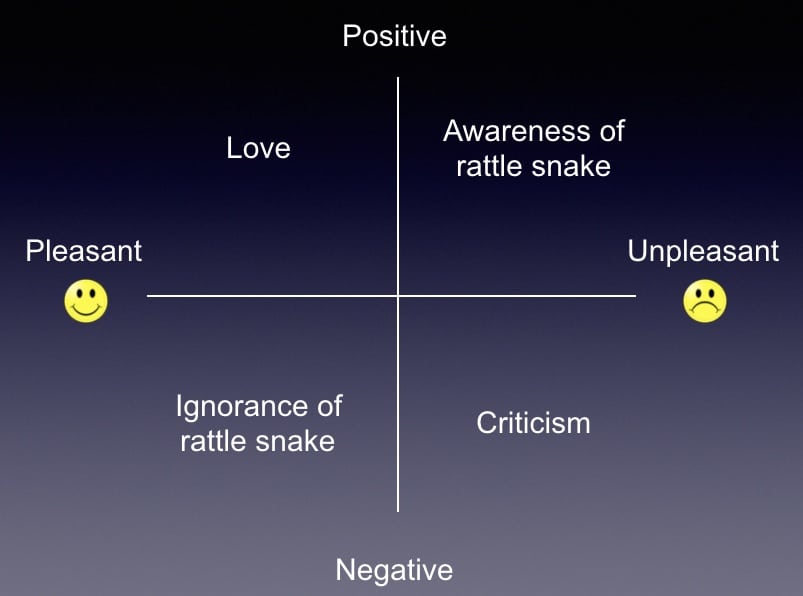Competency in basic relationship skills is a key component of moving from our dysfunctional status quo to a future of thriving on one planet’s worth of resources (one planet thriving). Increased resilience during the transition so that we can build that future is critical. Building relationships and community are two social technologies necessary for one planet thriving. The heart of these social technologies is dealing with reality instead of using avoidance. Being able to have a real conversation is key to that transition. At the root of this ability is a fundamental distinction, the distinction between positive and negative versus pleasant and unpleasant.
Reality, and our response to it, can be greatly facilitated by making a simple change. Instead of talking about positive and negative emotion, it’s more accurate to be talking about pleasant and unpleasant emotion. Then, it becomes much easier to identify and discuss situations where pleasant and unpleasant are not synonymous with positive and negative (see this article on real conversations and this article on intimacy strategies).
Instead, the two continua (pleasant to unpleasant; and positive to negative) are orthogonal to each other as indicated in the diagram above. In other words, it is possible to have pleasant emotions, thoughts, and behaviors that are negative for our lives and to have unpleasant emotions, thoughts, and behaviors that are positive for our lives. To make this clear, consider some examples for each quadrant in the picture below and also illustrated above (Note: This is an older version of numbering the quadrants based on the stages of a relationship):
- Pleasant and negative: Most addictive drugs, Denial/Suppression/Repression, Some forms of delusion
- Unpleasant and negative: Stepping on a thorn, Your child having cancer
- Unpleasant and positive: Dental work, Studying for an exam, Skillful disagreement
- Pleasant and positive: Reading a book in a hammock, Eating healthy food
This is really obvious, but the lack of this distinction in our language led to confusion at one of the Mind-Life Institute sponsored gatherings in which Western Scientists talked with Eastern Buddhist practitioners and the Dalai Lama himself. Scientists were talking about “positive” and “negative” affect (i.e., emotion) while the Dalai Lama was talking about whether a particular emotion was helpful or not helpful for decreasing suffering. Things could have been much clearer if the group had been able to talk about positive unpleasant emotions and negative pleasant emotions.


Pingback: Intimacy Strategies for a Thriving Me, We, and Big We | One Planet Thriving
Pingback: 3 Poisons, Interdependence, & Unpleasant Emotion as Information | One Planet Thriving
Pingback: A Psychopathic President, Staying Awake, and One Planet Thriving | One Planet Thriving
Pingback: The Canary: A New Symbol for Gratitude | One Planet Thriving
Pingback: Believing A Lie: Goethe, The 100th Monkey, & More | One Planet Thriving
Pingback: Mindfulness | One Planet Thriving
Pingback: Being on the Edges | One Planet Thriving
Pingback: Top 6 lessons learned living in cohousing: A psychologist’s view | One Planet Thriving
Pingback: The Dysfunctional Status Quo | One Planet Thriving
Pingback: Connection Strategies for Thriving | One Planet Thriving